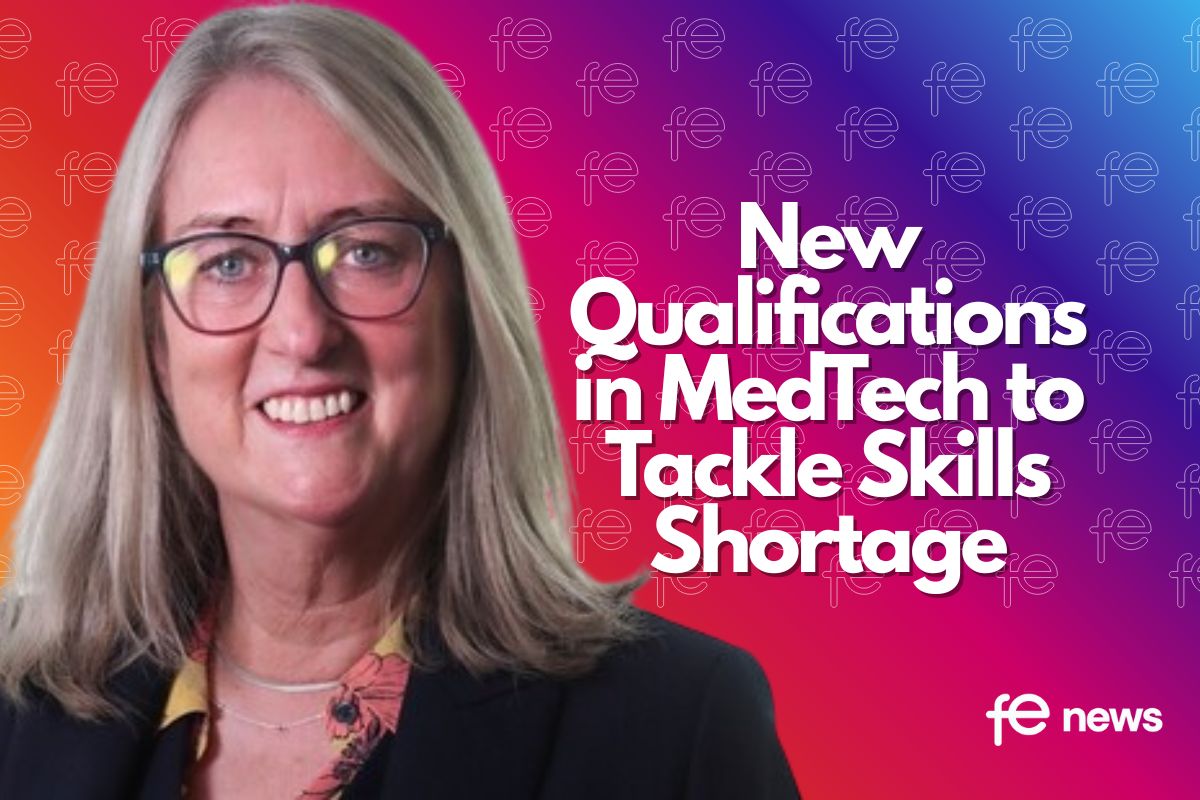Government knows what effective improvement intervention in education looks like: Its failure to do so in FE is a choice.

Government does know what serious and impactful intervention in poorly performing education institutions looks like. Its failure to do so in further education is a choice.
Before offering some conclusions, I want to share one last case study from beyond the further education sector.
In 2002, the DfES launched the London Challenge to improve the performance of schools inTower Hamlets, Newham, Lewisham, Hackney and Westminster – some of the worst-performing areas in the country.
The objectives of the programme were to: raise standards in the poorest-performing schools; narrow the attainment gap between pupils in London; and to create more Good and Outstanding schools.
The programme had three core elements:
- Focus on a group of around 30 priority schools with the worst performance;
- Work with ‘key boroughs’where there were systemic failings in local school performance; and a
- Commitment to investing in improving leadership.
Interventions and support included highly experienced former school leaders acting as advisers to support the schools; generous allocations of funding which advisers could quickly deploy for discrete and tailored interventions; and the forensic use of data to drive improvement.
As a result of the London Challenge:
- London schools’ Key Stage 4 results went from being among the worst to the best in the country;
- London had the smallest attainment gap in the country for pupils in receipt of free school meals; and,
- by 2010,Ofsted rated 30 per cent of London schools as Outstanding.
The legacy of the programme is still visible. At the end of 2016/17, 91 per cent of London secondary schools were rated Good or Outstanding by Ofsted; the highest proportion of any region in the country.
I share this example for one reason. Government knows what serious, effective, improvement intervention in the education sector looks like.
That we have not seen a similar programme in relation to poorly performing further education colleges is a matter of prioritisation through successive policy and spending processes. If government was super-serious about improving colleges, they would both boost funding and intervene more fundamentally when organisations are not performing to the required standard.
Particularly since the pivotal summer of 2015, transforming a poorly performing further education college has become an exercise in beating the odds, and the system.
In Chapter 1, I tried to give a sense of how incredibly difficult it is to run a further education college. Beyond the challenges associated with delivery of any public service, colleges have, and continue to face, a particular combination of challenges with respect to their policy and funding context.
I believe that these pressures passed a tipping point in the summer of 2015. My point of view in preparing this piece has therefore been that the successful transformation of a further education college has become an exercise in beating the odds and, to a very real degree, the system.
To quickly, substantially and sustainably improve curriculum and/or financial performance, leaders need to get pretty much everything right.
In baseball there is the concept of a ‘perfect game’ – one in which, over the course of all nine innings, a given pitcher does not allow the opposing team to hit the ball, let alone get to first base,score any runs or home-runs.
In over 200,000 games of professional baseball played through to the summer of 2015, there had been 23 perfect games pitched. While the odds of successfully transforming a struggling further education college are better than that, I, and many others, can confirm that it doesn’t feel like it when you’re leading such an effort.
My conclusion is that to transform poorly performing colleges leaders should adopt a purpose-led, people-oriented, programmatic and insight-driven approach.
1. Leverage the power of purpose to inspire the transformation
Colleges have in common a profoundly important – and energising – purpose. Leaders should look beyond a transactional view of the employment relationship and leverage that purpose to engage, galvanise and help guide colleagues through the transformation.
A focus on purpose and engagement can be particularly powerful in helping leaders build a cadre of aligned, empowered and effective middle-managers who can drive improvement in their areas.
2. Devise a genuine, long-term strategy to guide the transformation
Colleges are complex, dynamic organisations operating in a frenetic sector context. Their successful transformation requires that leaders posit a clear,simple, genuinely-strategic and long-term strategy to guide the transformation into the medium-term.
Such a strategy must: properly diagnose the issues and challenges which need to be addressed;set out a clear, workable guiding policy to address those issues; and define clear actions.
3. Establish a thorough, insightful, understanding of the baseline position
Whatever the moment which sparks the transformation – whether an Ofsted inspection,Commissioner intervention or change of chief executive – it is vital that, in setting strategy, leaders establish a thorough, insightful understanding of the baseline position.
That baselining exercise should include, at least:
- Detailed analysis of curriculum and financial performance information;
- Review of regulatory and contractual compliance;
- Extended staff and stakeholder engagement; and
- Some form of curriculum quality review exercise.
4. Chart your own course through constant changes in government policy
Government policies relevant to further education change pretty much constantly. It is barely possible to run a strong and stable college – let alone transform one – while also responding to every new announcement coming out ofWhitehall.
In setting strategy, leaders should chart their own course in the context of obvious medium-term trends in government policy, like: the importance of skills to productivity; the desire to give employers greater influence over the system; the focus on student progression; and the commercialisation of the sector.
5. Make a lived reality of organisational values to build a culture of high performance
Along with a focus on purpose and a clear strategy, organisational values create a platform for organisational change – and a way of working to realise it. Much like purpose, values are often underutilised as a lever for change; also, like purpose, an organisational focus on values starts with the conduct and decisions of the organisations’ most senior leaders.
Where leaders model the right ways of working and decision-making, others will more likely follow suit, helping to build the culture of purpose and performance required for transformation.
6. Unleash and grow the talent of colleagues already in the organisation
Leaders often assume that to change the performance they need to change the people. I would encourage leaders to flip their presumption and assume that by engaging authentically with colleagues about purpose,setting a clear strategy, making a lived reality of organisational values – and by investing seriously in staff training and development – they will be able to unleash and grow the talent of colleagues already in the organisation.
These leadership investments have the potential to deliver transformed engagement and performance.
7. Provide colleagues with a clear, simple, architecture for the transformation
Leaders should – not least by focusing on purpose and setting good strategy – create umbrellas which shelter colleagues from the complexity of the external environment,so they can focus on the transformational task in hand.
They need also to find simple, accessible ways to communicate the shape and emphasis of the transformation to colleagues,so they can easily see how it affects them – and what it requires of them.
By giving shelter, constancy and clarity, leaders create reasonable roles in an unreasonable context – such that they can reasonably expect that colleagues will deliver the required contribution to the transformation.
8. Proportionately apply programme management and process excellence techniques
One of the most important things that leaders can do to bring structure and clarity is to proportionately apply the principles of programme management and process excellence to their transformation.
That means:
- Using programme management techniques to devise and drive the transformation as a programme of work;
- Using programme management and ‘version control’ to punctuate the annual business – and improvement – cycle;
- Introducing streamlined, robust, accountability and performance management structures; and
- Using programme and process management techniques to support curriculum improvement – for example by creating a set of standard operating procedures for curriculum management.
9. Establish the processes and culture required to align resources with priorities
Colleges are now badly under-funded by government; it is doubtful that they now receive the resources necessary to operate in business as usual – let alone transform. In that context, it is crucial that leaders operate business-planning and operational-cost control processes which ensure that the resources that are available are aligned with their transformation priorities.
Those processes must be supported the establishment of an organisational culture which supports the same prioritisation – again this is a function of leaders’ focus on purpose.
11. Contain necessary commerciality to commercial job roles and business units
Colleges have responded differently to the growing commerciality of the overall sector environment. Asking colleagues across the organisation to be more commercial in their work poses real risks to transformations – confusing colleagues’ job roles and creating unreasonable expectations.
Rather, leaders should create structures which concentrate commerciality in discrete job roles and business units charged, for example, with growing apprenticeship levy revenue – and freeing curriculum colleagues to focus on curriculum improvement.
12. Push for a single version of the performance truth – and insight, not just information
Maintaining an accurate, compliant data set in a further education college is a mammoth task in its own right. Leaders should establish a single version of the performance truth for use at all levels in the organisation.
Beyond that, leaders should also push for insight, not just timely information;such is the data that colleges maintain on their students, it should be possible to understand – and predict – performance by forensically analysing student data. This sort of analytical approach will enable leaders and managers to sharply focus improvement actions.
13. Lead authentically and live the organisation’s purpose and values in your own conduct
The leader of the transformation must fundamentally associate themselves with the organisation’s purpose and transformation. Though the CEO and pincipal labels may be allocated to two or more leaders, it is vital that the most senior member of the executive team is acutely focused on – and on the hook for – curriculum improvement.
To deliver the sort of purpose-led transformation advocated here, leaders will need to engage openly and authentically with colleagues at all levels in the organisation.They must be happy and able to guide and support colleagues in making operational decisions in the context of the organisation’s purpose,strategy and values.
They must, therefore, exemplify the organisation’s purpose, strategy and values in their own conduct and decision-making.
14. Recognise that leading in transformation and business as usual are different skillsets
It is important to recognise that leading transformations is a distinct skillset, different in nature to the leadership of business as usual; neither is ‘better’ nor more valuable than the other – but they are different.
Leaders must ensure that they – and their team – possess the requisite expertise in, for example, operating on strategic and operational levels at the same time, changing their approach and plans in response to events.
Even if you get everything right, the odds are still stacked against you.
All of the above and more may not be enough. Most transformations fail. Only with more stability and support from government can colleges really be expected to transform and sustain their performance for the long-term.
Where leaders succeed in delivering transformations, they do so by beating the odds, and the system.
Matt Hamnett, Director, MH+A
Over the next few weeks FE News will be publishing this research in full, and FETL will be hosting a webinar with Matt on the report later in February.
Chapter One: The further education operating context is incredibly tough / The introduction of T levels
Chapter Two: College performance compared to other sectors
Chapter Three: The 5 causes of poor performance in FE
Chapter Four: Seven lenses of transformation for FE / FE Can Learn From The Success Of Other Sectors
Chapter Five: Good Strategy Is Crucial For FE Transformation / Policy Cycle Blights FE: Colleges Leaders Should Chart Their Own Course
Chapter Six: How to unleash the talent already in your college / Aligning funding with organisational purpose, strategy and transformation priorities
Chapter Seven: Leading the transformation in FE











Responses